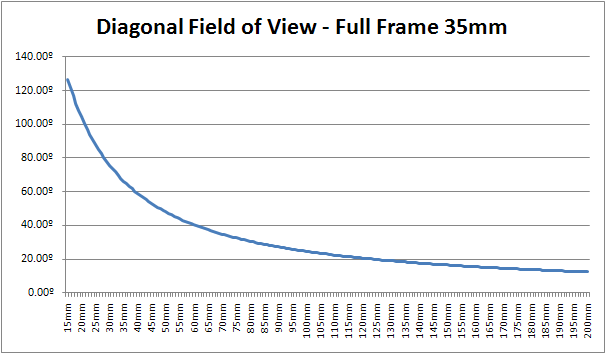There is also another thing to consider. As you zoom in with linearly in millimetres, the actual field of view change is not linear. Zooming 2mm in when at 17mm will result in a much larger change in the field of view than zooming 2mm further at 200mm.
It will depend on how you define the "zoom factor". Is it field of view or focal length?
EDIT
Here is the actual field of view graph for 1mm increments from 15mm to 200mm on a 35mm SLR. This was generated at http://www.howardedin.com/articles/fov.html and the diagonal was made simply with the hypotenuse algorithm h²=x²+y². The graph itself shows in 5mm increments.

